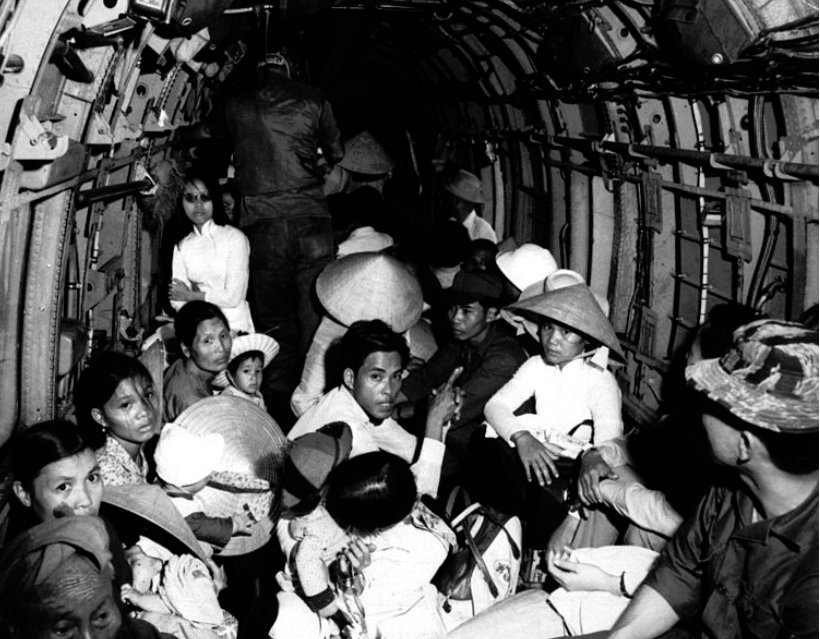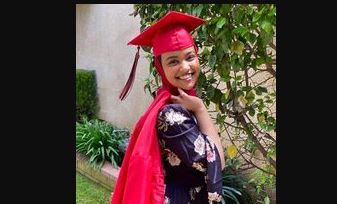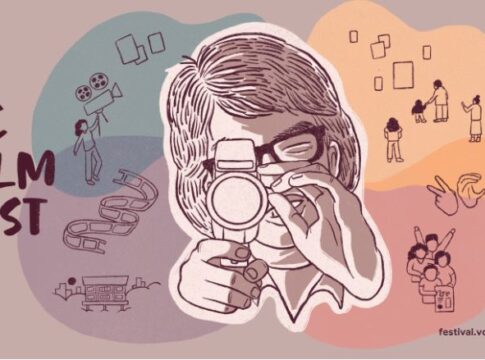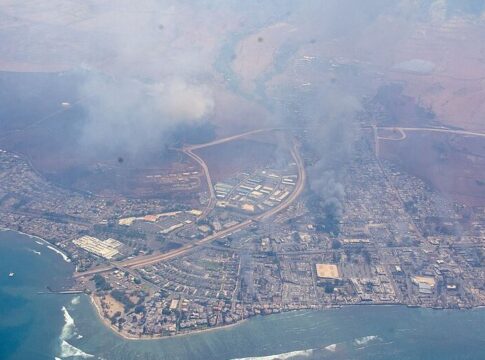(This is the latest in a series of stories on AsAmNews to commemorate the 40th anniversary of the Fall of Saigon and the arrival of Southeast Asian refugees to the United States. The following is a question and answer with Jean Luc. Her story is featured in the book by Carina Hoang, Boat People: Personal Stories From the Vietnamese Exodus)
What was life like living in South Vietnam in the final days and
months leading up to the fall of Saigon? Where were you living at
the time? How old were you?
Life for me as a 10 year old, in the months leading to the Fall of Saigon was a series of frightful moments, full of confusion. The incessant artillery shelling by the communist aimed at the US air base in Bien Hoa were extremely frightening as we lived about half a kilometer from its perimeter. There were talks of the enemy killing every one who were in any way linked to the military of the Republic of Vietnam. This was accentuated by the increasing number of military vehicles passing by our streets with the dead and wounded solders.
What do you remember most in the final days of the fall of Saigon?
Describe the excitement or fear you felt as you left Vietnam? What city did you
leave?
LATEST STORIES
People were hoarding food, supplies, gold, and US dollars. People were looting the houses of the ones who left the country or who sought refuge elsewhere. There was definitely fear in everyone. My family was not excited. We left our old and ailing grandmothers behind and carried what little we could to be as far away as possible from the bombs and explosions. My mother decided that we could find our way out of the country in Saigon, so we were there seeking refuge from house to house while my mother was in search of a way out for us.
There were 10 of us: my mother and her 7 kids, aged 2 to 14, and our two older teenage cousins.
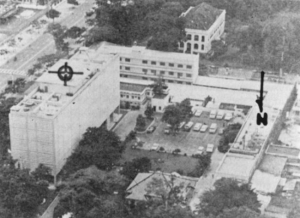 On the 29th of April, we found ourselves crushed in the mob of people outside the US embassy in Saigon. My mother bought some sort of entry pass from some stranger for a lot of gold and we fought our way into the embassy. It took us from the morning until midnight to get to the door of the embassy building. We drank from the swimming pool that was littered with trash, paper, money, guns.
On the 29th of April, we found ourselves crushed in the mob of people outside the US embassy in Saigon. My mother bought some sort of entry pass from some stranger for a lot of gold and we fought our way into the embassy. It took us from the morning until midnight to get to the door of the embassy building. We drank from the swimming pool that was littered with trash, paper, money, guns.
As we wound our way up the five flights of stairs, we suffered terribly. We were small children, full of fear and extremely tired and hungry. The US solders were firing their rifles randomly while laughing and blowing steam. Money and guns littered the stairwell and hall ways.
We made it to the top floor and were first in line for the next chopper as dawn neared. Then we were told to go back downstairs to catch the choppers. They lied saying they had burned too much paper on the roof and there was too much smoke to land on the roof.
So we turned around and were made to leave the building. The Marines made a semi-circle with guns pointing at us, then proceeded to throw canisters of tear gas at us as they slowly backed into the embassy building, locked the doors, and headed up to the roof to catch the last flights out.
We were stunned and dead-tired, then finally realized what had just happened. Crushed and dejected, we walked out the embassy compound without shoes or sandals as we lost them in the melee.
The sun came up as we walked barefoot back to the house where we last stayed. A few hours later, communist tanks came rumbling in and shook the streets and houses as they went by.
How did you and your family get out of Vietnam? What sticks out the
most about that experience?
Three years later my elder sister and I escaped from the southern tip of Vietnam, headed for Malaysia in a small fishing boat. Thirty six of us were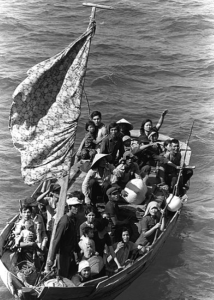 contained in a small hidden compartment with no ventilation, and were nearly asphyxiated due to the lengthy searches by the authorities. Another 10 minutes would have done us all in.
contained in a small hidden compartment with no ventilation, and were nearly asphyxiated due to the lengthy searches by the authorities. Another 10 minutes would have done us all in.
We made it to the Malaysian coast without incidents, but were denied entry. That same night the captain brought us back to the coast and we swam to shore as the boat and crew were dropping us off before going fishing before returning to Vietnam.
Which refugee camp did you end up in? What were conditions like?
How long did you stay?
They placed us in Pulau Besar, from this small island we could see the bigger island of Pulau Bidong. The condition was primitive, we lived in small thatched huts that gave shade, but no protection from the monsoon rain. Sanitation was non existent. We dug wells that produced salty water. Not far from these wells were fields which people used as open-air toilets. I think we were lucky to not have a cholera epidemic. Most of us ended up with tuberculosis and malaria. Luckily, as unaccompanied minors, we were allowed passage to the US after four months.
How did you eventually end up in the United States. Where did you
land and where did you eventually settle? How old were you when you
landed in the US?
We were sponsored by the Catholic Social Services, and were placed in a Vietnamese home with a member of the congregation in Tacoma, Washington. I was 14 years old, my sister was 16.
What was the most difficult aspect of adjustment to the US?
How did you feel you were treated in the United States? What story
will you most remember about your early days in the US?
Learning English, dealing with the cold weather, and realizing that I may never see my mother, father, siblings, and grand mothers again were extremely difficult to deal with. But as teenagers we could only see what’s in front of us, and we moved on the best we could.
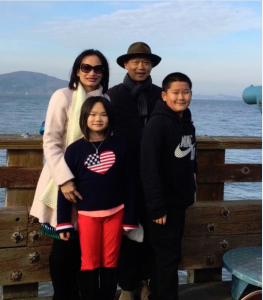 We were treated very well by the people around us. The American people gave us shelter, fed us, clothed us, educated us, tolerated us, many embraced us. We were very lucky and extremely grateful for all that were given us.
We were treated very well by the people around us. The American people gave us shelter, fed us, clothed us, educated us, tolerated us, many embraced us. We were very lucky and extremely grateful for all that were given us.
Is there anything else you’d like to add?
I wish to thank the nation and all the people who gave us shelter, fed us, and taught us how to be. I am forever indebted and deeply grateful, as well as honored and humbled to be part of this great nation.
RELATED STORIES
Fall of Saigon: 40 Years Later Through the Eyes of A Vietnamese American
Child Learns Lessons of War & Survival
Death-defying Journey to Freedom After the Fall of Saigon
Ken Kashiwahara Returns 40 Years Later to Recall the Fall of Saigon

